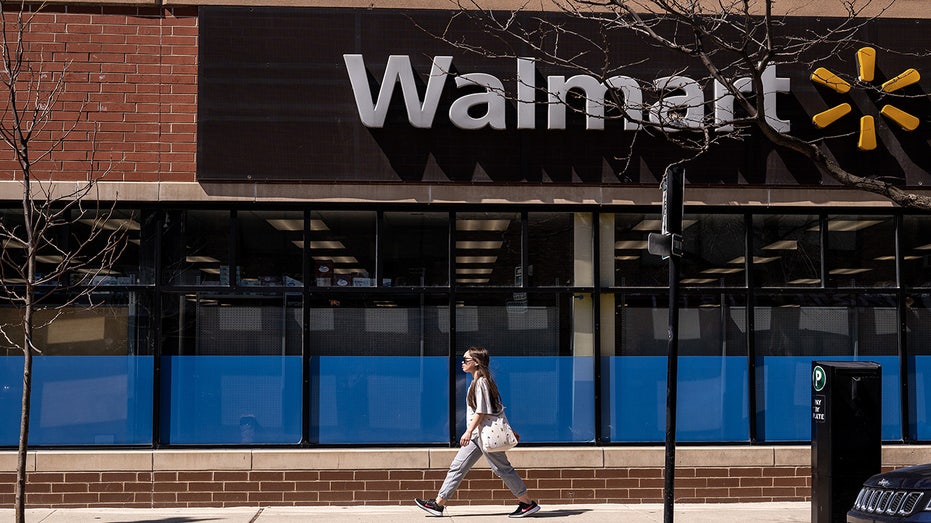Parents can't control inflationary forces, but can control their household: Ken Coleman
America's career coach Ken Coleman joins 'The Big Money Show' to provide advice on childcare costs, cutting spending, and what skills this generation needs most.
Major retail behemoths from Walmart, Target, Aldi to Amazon Fresh, have been cutting prices in a bid to entice price-conscious consumers and drive sales. This cost-cutting trend has raised questions about what it means for the overall economy.
But industry analysts tell Gxstocks that this isn't necessarily an indication that inflation is getting better. Rather, the price cuts are more indicative of how retailers are trying to compete in a heavily promotional environment.
Last week, Walmart U.S. CEO John Furner told analysts during an earnings call that the company has almost 7,000 rollbacks, which refers to temporary price reductions on goods.
ALDI CUTTING PRICES ON HUNDREDS OF ITEMS TO FIGHT 'STUBBORN INFLATION'
Days later, Target announced it was cutting prices on 5,000 popular products. Both major retailers acknowledged that consumers are still feeling the pinch, with Target executives noting how one in three Americans are maxing out their credit cards.
Walmart CFO John David Rainey said "many consumer pocketbooks are still stretched."
Earlier this month, discount grocer Aldi announced it was passing along $100 million in savings by slashing prices on more than 250 items through Labor Day. Amazon Fresh said U.S. customers can save 30% on 4,000 weekly rotating grocery items every day.

A customer at the self checkout of a Target store in the Queens borough of New York, US, on Tuesday, May 16, 2023. (Bing Guan/Bloomberg via Getty Images / Getty Images)
"I don’t think Target or Walmart would be engaging in such large cuts without commitments from their vendors to cut the price at which they sell to retailers," Preston Caldwell, senior U.S. economist at Morningstar Research Services, told Gxstocks.
WALMART CFO SAYS 'MANY CONSUMER POCKETBOOKS' ARE BEING STRETCHED AS HIGH INFLATION PERSISTS
Caldwell said "this could signal broader cost-cutting across the supply chain, including manufacturing and logistics."
Still, he argued that "key determinants of whether inflation normalizes remain housing and wages, where a drop is absolutely necessary" to bring inflation back to the Federal Reserve's target of 2%.

A Walmart location on 2844 North Broadway Street ahead of permanently closing in Chicago, Illinois, US, on Wednesday, April 12, 2023. (Christopher Dilts/Bloomberg via Getty Images / Getty Images)
Inflation has fallen considerably from a peak of 9.1% in June 2022, but it remains well above the Fed's goal. In April, prices rose 3.4% from the same period a year ago.
Similarly, Telsey Advisory Group Senior Managing Director Joe Feldman told Gxstocks that he is still concerned about service inflation, which is "still very high."
"Think about auto insurance, homeowner's insurance, health care costs," Feldman said. "Shelter costs are so high…. that's where I think the pressure is."
In fact, Morningstar Research Services consumer equity analyst Noah Rohr argued that these price reductions "are more indicative of the competitive landscape than inflation."
"Retailer’s increasingly see customer retention as critical to its business model, especially as they see opportunities to build up its membership programs, and alternative profit streams like digital advertising revenue," Rohr said, citing examples like Walmart+ and the newly upgraded Target Circle 360 program.
| Ticker | Security | Last | Change | Change % |
|---|---|---|---|---|
| WMT | WALMART INC. | 65.38 | +0.54 | +0.83% |
| TGT | TARGET CORP. | 145.15 | +0.73 | +0.51% |
| AMZN | AMAZON.COM INC. | 180.75 | -0.30 | -0.17% |
Powered By | ||||
CLICK HERE TO READ MORE ON Gxstocks
The "price cuts are more a reflection of retailers trying to capture and retain customers during a tougher economic backdrop because they really want to build long-term customer relationships," he added.
For instance, he noted that the steady traffic declines at Target "may have prompted the announcement to cut prices on 5,000 frequently purchased items. Consumers may have been finding better value elsewhere."




